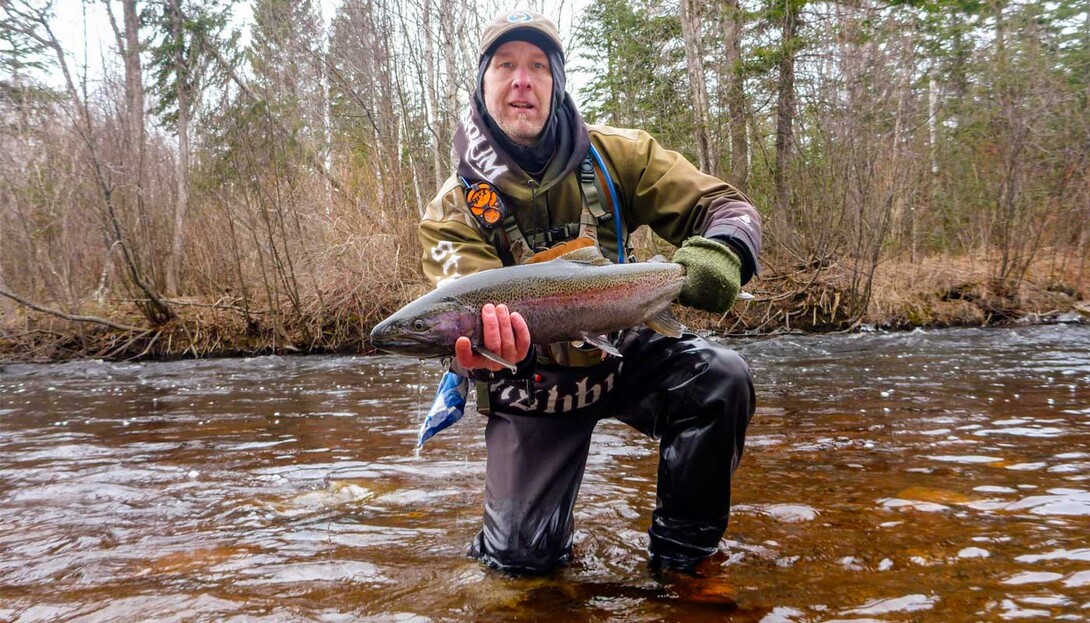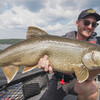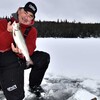
The Fast Track To Superior Steelhead

Ontario is home to some of the finest steelhead fishing on the planet, and there is no better time to enjoy the action than right now, after the fish have completed spawning.
And while the Great Lakes, in general, offer superb steelhead opportunities, the true hot spot may just be the entire north shore of Lake Superior and Lake Huron.
As celebrated as the fishing is, however, some anglers are cautious about dipping their toes into the water, mistakenly believing that float fishing for rainbows is difficult.
"It is easy to get started float fishing with a 10-foot spinning rod and reel," says Thunder Bay's Wes Bender, who manufactures the famous Superior Floats. "It may not be quite as effective as a centerpin setup, but you can certainly get the job done. I know because I did it for years."

According to Bender, the three essentials to pay close attention to are the depth of the water, the speed of the current, and the presence or absence of waves.
"You always want to keep your bait down near the bottom," says Bender, "and choosing the proper float will help you do it. When the water is deeper than 6 feet, I use a slip float. And if the run is short, I'll increase its size so that I can add more weight to my line to get my bait down quickly."
Alternatively, when Bender is fishing a slow-moving shallow section of a river, he opts for one of his Lil Trotter or Fixed Loafer style floats that are considerably more streamlined and thus sink quickly and respond immediately to light-biting fish. The Fixed Loafer also rides higher in the water, so if you make a long cast, you can easily watch it drift downstream.
He uses the same style of floats when he is fishing in fast-moving water.
"The Trotter is your basic float, whereas the Fixed Loafer is a more custom shape," Bender explains. "Personally, it is my 'go-to' float, the one I find myself using the most. It has gained a large following among some of the more proficient float anglers on the North Shore."
When I ask Bender why the Fixed Loafer has gained such notoriety, he says it is because the steelhead typically frequenting the picturesque rivers along the North Shore of Lake Superior and Lake Huron spend a disproportionate amount of their time in rapids, runs, riffles, and the broken water around river mouths.

"The waves can be tricky to deal with because as your float bobs up and down, so does your offering in an unnatural fashion," Bender says. "This can greatly reduce the number of strikes. I find that the Fixed Loafer style float cuts through the waves better, minimizing the unnatural movement.
"This is also where your skill as an angler comes into play. When you are fishing a fast-moving run, you have to remember that the trout take the path of least resistance. The waves are caused by boulders beneath the surface, so they're great resting and ambushing spots for the fish. You need to read the water so that as your float travels downstream, you can pull it into these calmer seams and sections."

When you get as good as Bender is at "reading the water," you can almost predict when a seam will open up so you can position your float properly. And he admits, he still gets excited when he pulls a steelhead out of a run that looks inhospitable to fish.
Listening to the North Shore river rat extol the virtues of float fishing also leads to the inevitable question: whether or not the colour of your bobber might frighten the wary trout.
"I have been asked this question many times," says Bender, "and my answer is always 'no.' The key to float fishing is putting your offering in front of the steelhead before it sees anything else. The colour of the top half of your float, however, is important. I use chartreuse early in the morning, late in the evening, and when the light is dim. Bright orange and hot pink, on the other hand, stand out during the day.
"Lately, I have been testing a new glow-in-the-dark float that allows you to see it at night without turning on a headlamp. You simply charge it up with a flashlight and get about 10 minutes of fishing time before you need to charge it again. I especially like it when I am fishing close to the rainbows and would spook them with a headlamp."

As Bender takes care to mention, the paramount factor to catching fish under a float is always making sure that the first thing they see drifting down with the current is your bait. And the way to ensure it happens is by properly weighting your line.
"I start by tying what is called a shot line," says Bender. "In my case, it is an 18- to 24-inch length of fluorocarbon line that is slightly lighter than my main line. So, I have a 12-inch, 8-pound test leader, 24-inch, 10-pound test shot line, and 14-pound test monofilament main line.
"I actually get out a kitchen scale and weigh 8 grams of split shot that vary in size from large to tiny. I place the larger shot at the top, and then progressively add the smaller weights as I get closer to the other end. By the way, I use a swivel on both ends of my shot line.

"The reasoning for this pattern is that I want the current to push my bait downstream in a forward arc so it is out in front of everything else. It often takes a little tweaking to get the perfect drift.
"With the slightly lighter leader, when I hang up on the bottom, nine times out of 10, I only break off the leader. I carry a wallet full of pre-tied leaders and shot lines that allow me to be back in business quickly. By running a heavier main line and attaching my float to it, I also minimize my float loss."

If you follow Bender's sage words of wisdom this spring, you'll soon be catching steelhead like an expert. And if you spend your time doing it along the North Shore of Lake Superior and Lake Huron, you'll think you're in heaven.
Recommended Articles

Cast Into the Heart of a Walleye Paradise
Top 5 Musky Destinations in Ontario

Summertime Walleye

Merkel's Camp

Eating Northern Pike

Brook Trout: A Natural Work of Art

Trophy Lake Trout on Lake Obabika

Long Nose Gar

Beaded Lures
Don’t Be Afraid Of Muskies

An Angler’s Perspective on Northern Ontario

Crankin' in Crappies

The Best Fishing Days

Streamers for Big Pike

Reaching Deep For Walleye

3 Great Ontario Walleye Destinations

Top 5 Baits for Smallmouth and Largemouth Bass






